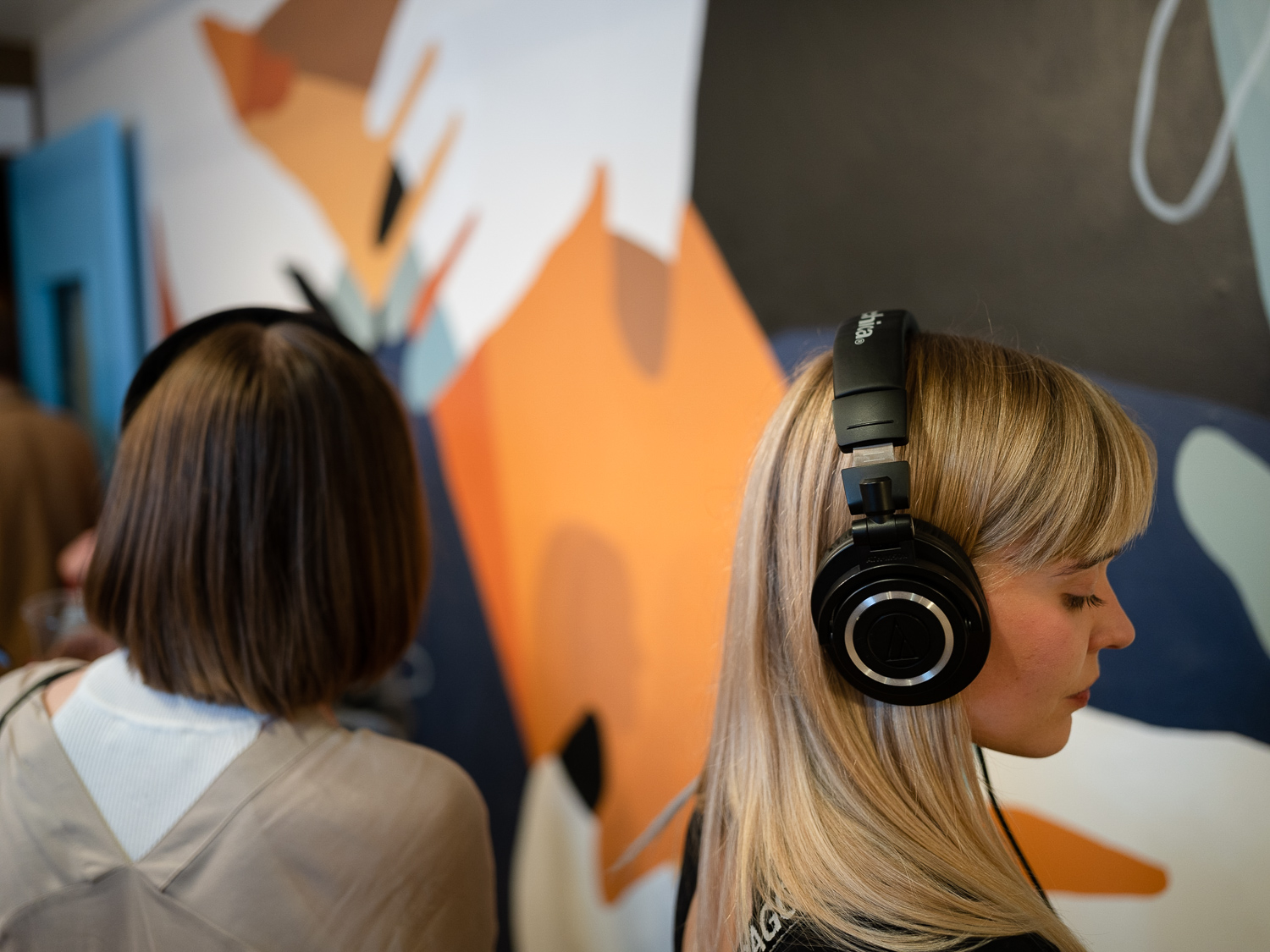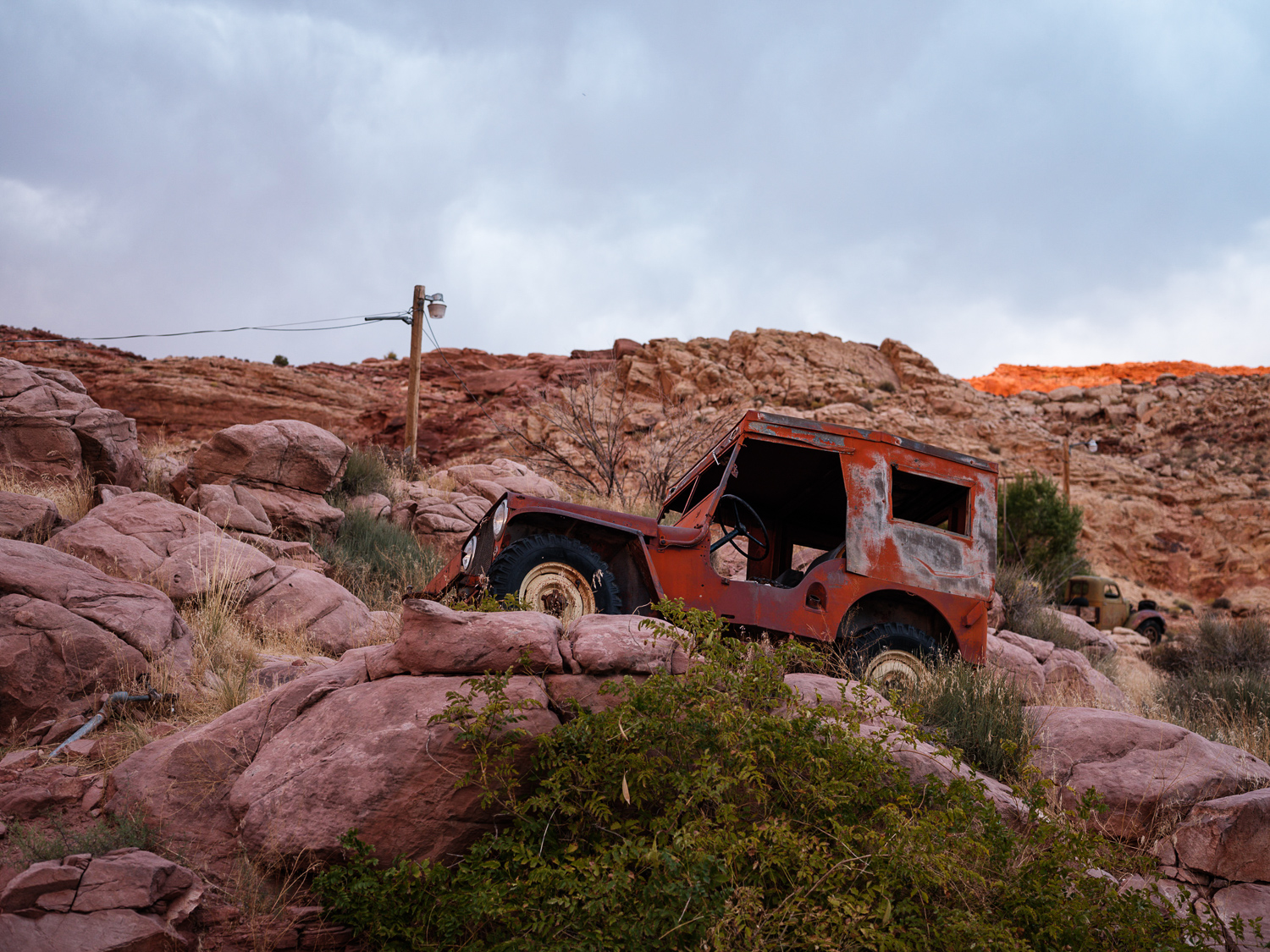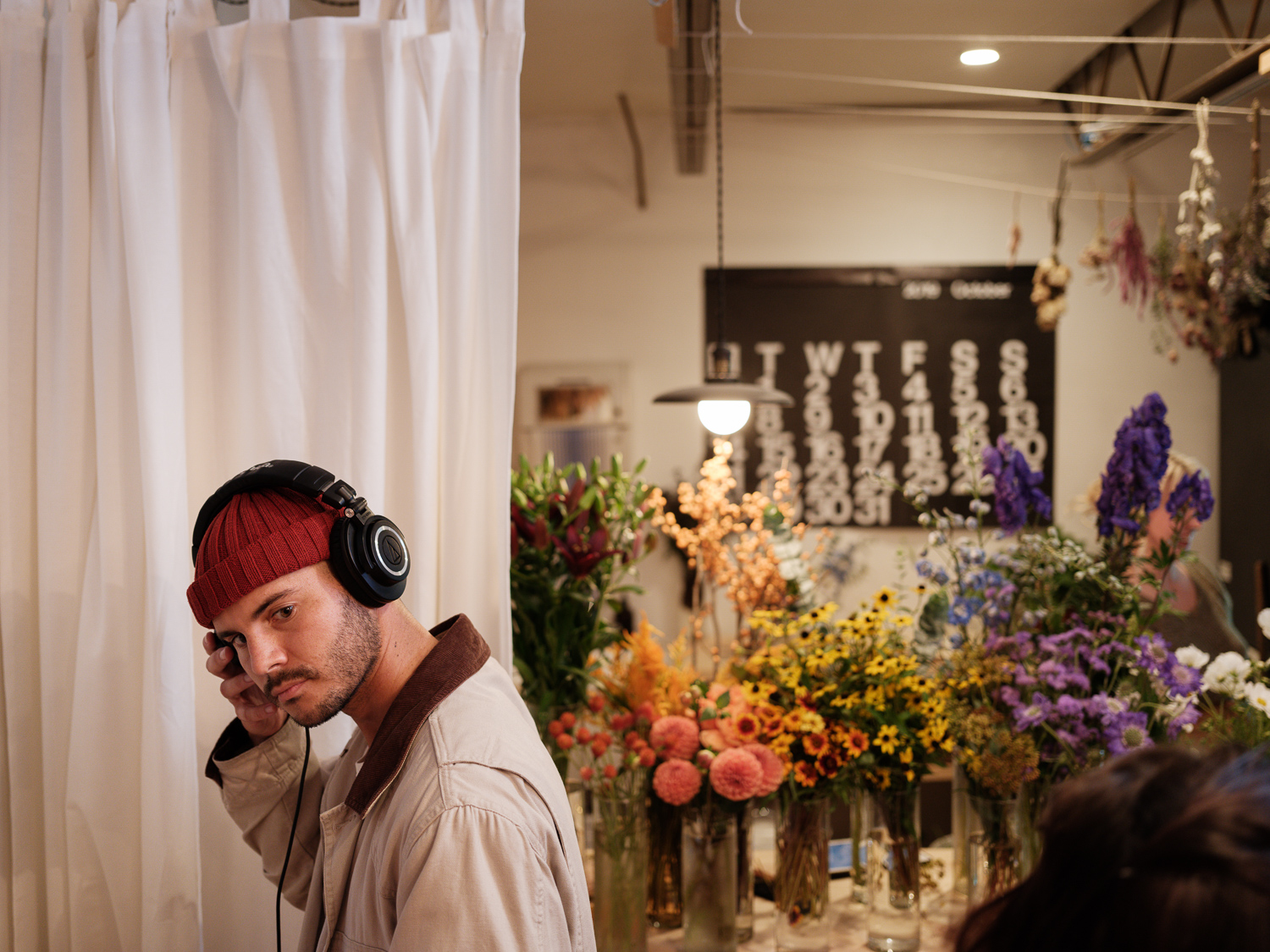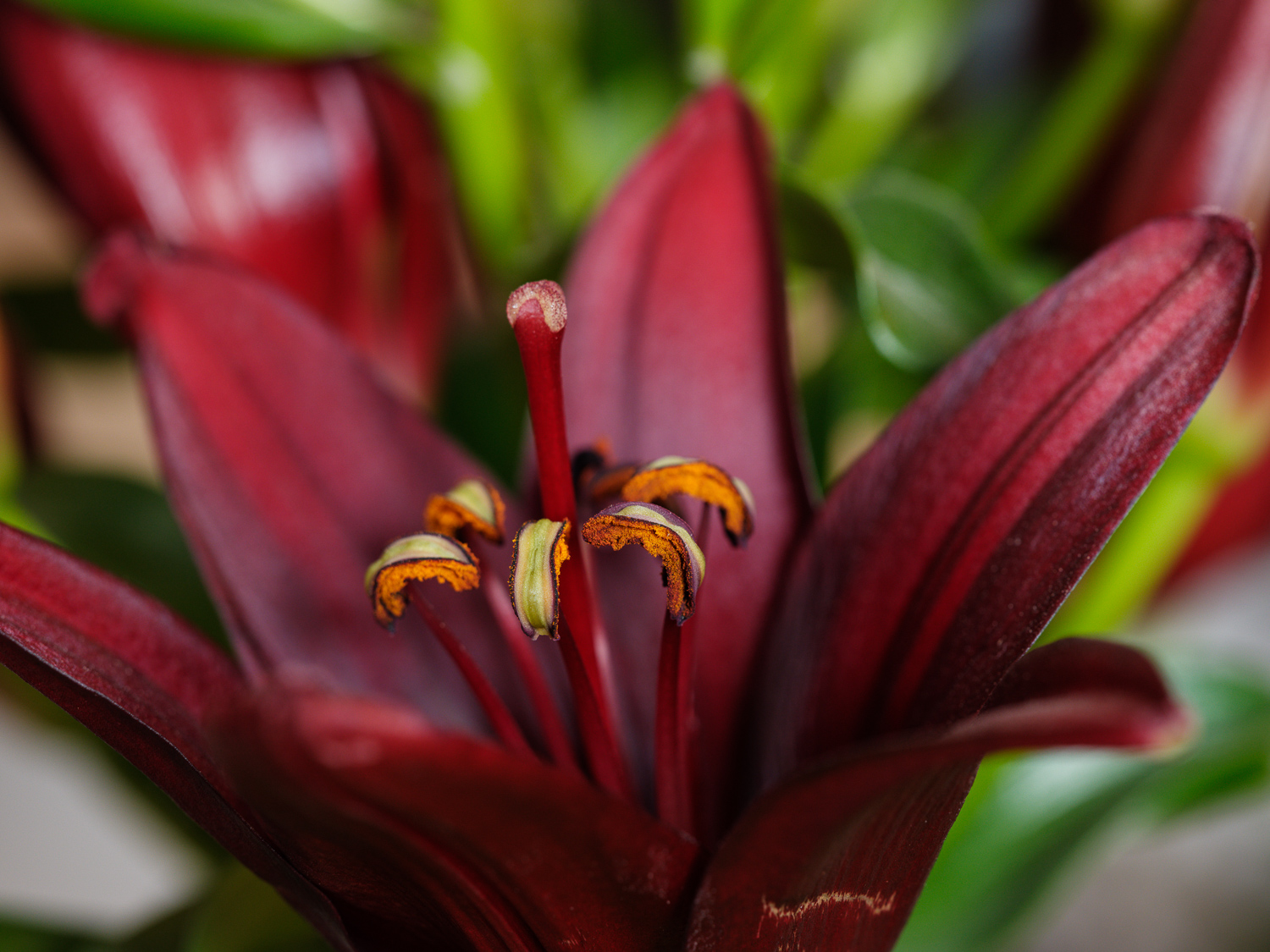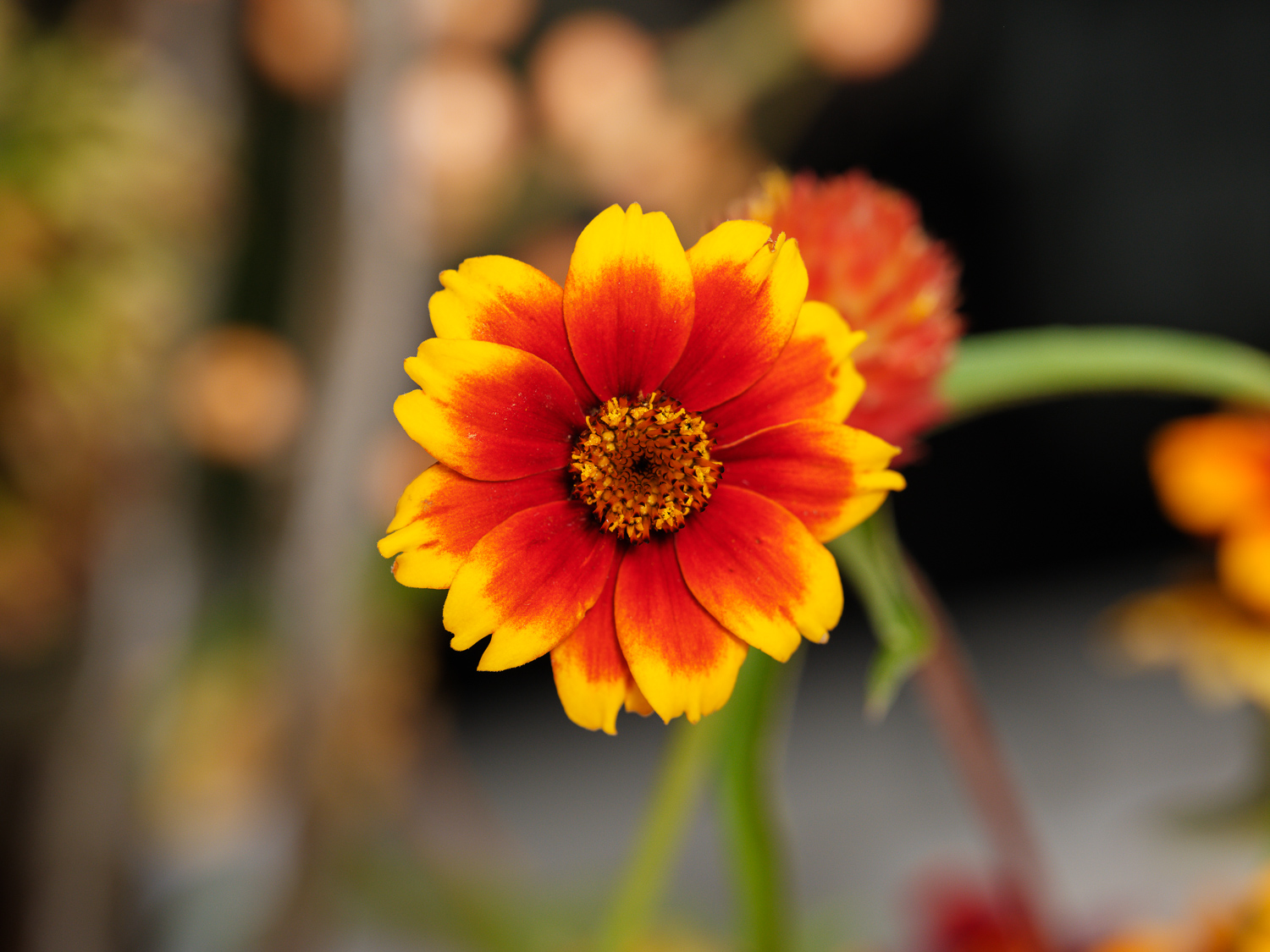“You don't need it, but the GFX 100 takes the best pictures of any camera we've tested.”
- Excellent 102MP images
- 5-axis image stabilization
- Much-improved autofocus
- Dual-grip, dual-battery design
- Three displays
- Very expensive
- Slow low light autofocus
- Large sensor offers marginal benefits
I have never used a camera quite like the Fujifilm GFX 100. This $10,000, 102-megapixel, medium-format mirrorless camera is out of my league (and budget). Its massive RAW files crashed my poor iMac. I ran into Adobe Photoshop’s 2-gigabyte PSD file size limit for my first time. My back ached after carrying it, and a complement of lenses, through an airport.
This isn’t a camera I can recommend to anyone save the few high-end photographers who already know they want it. For most, spending thousands more for a tiny improvement over the best full-frame cameras doesn’t make sense.
And yet, I found myself trying to brainstorm a scheme to raise a quick 10 grand. I love this thing. It takes the best pictures of any camera I’ve used while offering a friendly user experience uncommon to medium format. It’s a dream camera. But like any good dream, you have to eventually wake up.
Designed for professionals
The GFX 100 brings a new design that embraces its role as a professional tool. It integrates a vertical grip and second shutter button for portrait-orientation shooting and now holds two batteries for double the juice. That’s about 800 to 900 exposures in normal use.
The camera is large, but it’s comfortable to hold, at least in landscape orientation. The vertical grip isn’t as ergonomic as the primary one, but it’s still an improvement over no grip at all. It feels solid in-hand and inspires confidence.

I also appreciate that you can see your exposure settings easily at a glance thanks to three different screens, including an always-on electronic ink display on the top of the camera. On the back you’ll find the usual LCD, which tilts up, down, or to the right side for vertical shooting. Below it is an illuminated panel that shows exposure settings, film simulation, and white balance. This lets you to turn off the on-screen overlays without losing sight of critical information.
Despite an integrated grip and increased size, the control layout feels streamlined and simplified. The dedicated shutter speed and ISO dials have been replaced with standard front and rear command dials. A few controls are duplicated for vertical orientation, including the command dials and autofocus point selector, but the camera still looks sparse.
The electronic viewfinder boasts 5.7 million pixels and, like the EVF on the GFX 50S, is removable. Removing the viewfinder doesn’t make such a large camera compact, but it can help it slip into a narrower section of your camera bag. While there’s a hot shoe atop the EVF, there is also one where it connects to the camera body. This made it possible to attach my flash directly to the body without needing the EVF.

The EVF is also compatible with Fujifilm’s $550 90-degree tilt adapter introduced with the GFX 50S. You’d think this functionality could have been built in given the $10,000 starting price. Oh well.
Two SD card slots support high-speed UHS-II media, and you’ll fit about 1,200 RAW images on a 128GB card, but support for newer memory formats like CFexpress is lacking. This is good news in memory cost and availability. SD cards are cheap and you can find them anywhere, but photographers hoping to pair this high-resolution camera with the fastest possible memory will be out of luck.
Getting more from medium format
It isn’t just the resolution or dynamic range that makes the GFX 100 so appealing. It’s surprisingly easy to use compared to previous medium format cameras. This is still a methodical machine, but it’s considerably more versatile thanks to a new autofocus system and capable five-axis image stabilization.
Traditionally, medium format cameras have lived atop heavy duty tripods for use in controlled situations. This is partially due to size, but a stable platform was required to deliver sharp results.
That changes with the GFX 100. The sensor-shift stabilization helps get the most of its 102 megapixels, even when shooting handheld. This isn’t an Olympus OM-D E-M1X, where you can shoot shutter speeds measured in seconds and still get blur-free results, but you can use “reasonable” speeds and walk away with tack-sharp, ultra-high-resolution images.
Fujifilm advertises 5.5 stops of shake reduction. In practice, I found the limit to be about 1/60 second using the 63mm f/2.8 lens. Your experience will vary, of course, based on your equipment and settings.
Handheld shooting is aided further by the new phase-detection autofocus system that covers the entire sensor. You can position the focus point where you need it, and focus locks in much faster than with the GFX 50S. Face and eye detection is available and works well in the right situations. It was effective when shooting a single subject. However, events with people milling about meant the camera didn’t know which face to focus on, so the standard single-point AF was easier.
I shot a wedding and a gallery reception as part of this review, assignments that would have been tricky, if not impossible, with the older GFX 50S. Under good lighting, the focus is fast enough to keep up with full-frame mirrorless cameras and DSLRs, although it does suffer in darker situations. The dual batteries provide peace of mind for event shooting, where you don’t always know when you’ll have a chance to swap or charge batteries.
Image quality
It wasn’t long ago that medium format sensors were great for resolution, but terrible for high ISO noise. That is no longer the case. With the move to CMOS sensors starting with the 50MP unit in the Pentax 645Z (later used in the Fujifilm GFX 50S and 50R and Hasselblad X1D-50C and X1D II 50C), high ISO performance caught up and even surpassed full-frame. The GFX 100 continues this trend, and its images are among the cleanest I’ve seen.
Even after significant exposure adjustments in post, RAW files maintained integrity and only started to break down after extreme changes. There’s nothing here that’s leaps and bounds above the best full-frame sensors, but the differences are at least noticeable.
This is also a surprisingly capable video camera, although I’ll stop short of calling it “good for video.” It includes both headphone and microphone jacks and shoots 4K video with optional 10-bit F-Log and HLG recording, similar to the Fujifilm X-T3. Unlike the X-T3, however, it employs line skipping and pixel binning to reduce those 102 megapixels down to the roughly eight that are needed for 4K, which means a reduction in quality. It also suffers from rolling shutter.
Chances are, nobody in the market for a 100MP medium format camera is going to buy it based on its video specifications. If you have to shoot video in a pinch, this camera can do it, but it’s well short of the best video cameras.
The editing experience
With a camera like this, the photography experience doesn’t end with the click of the shutter. The out-of-camera image quality is quite good — with great JPEGs if you want them — but the real promise of this sensor is the flexibility it gives you with the RAW files in post.
With over 100 megapixels of resolution, local edits can be more accurate. In a Halloween-themed portrait shoot with a friend of mine, I had to do a considerable amount of cloning, masking, dodging, and burning. When starting with 102MP, getting clean results at smaller deliverable resolutions is easier. I could even be a bit sloppy and still have details that looked clear when resized for the web. I am not a Photoshop guru by any means, but I can tell this is an incredible camera for post-heavy workflows.
- 1. Straight from camera
- 2. Edited in Adobe Lightroom and Photoshop.
The downside of this is massive file sizes. Shooting compressed 14-bit RAW, each image was about 90 megabytes (the camera offers optional 16-bit files, but there doesn’t appear to be a noticeable difference). Once converted and opened in Photoshop, that file size balloons. After a few layers of adjustments and effects, I ran into the 2-gigabyte cap for PSD files, something I had no idea existed until then.
This took a toll on my 7-year-old iMac, released the same year as the 36MP Nikon D800 (its resolution seemed nuts back then). Times change. In Lightroom, operations that normally would have taken a blink of an eye were now taking several seconds. Occasionally, the MacOS “spinning beachball of death” would persist for upwards of a minute after using the healing brush. An ill-advised force quit caused me to lose 2 hours of work. It was painful.
It’s safe to assume that someone who can afford a $10,000 camera can also afford a newer computer, but be warned. You’re going to need modern hardware.
Our take
This is a hard product to review. Chances are you’ve either already pre-ordered the GFX 100 and you’re looking for confirmation that you made the right choice…or you can’t afford this camera but, like me, are a photo nerd and want to know what it’s all about.
If you’re somehow in the middle, trying to decide between a $3,000 full-frame camera and this $10,000 beast, then take my advice. Don’t spend the money. Go for the full-frame and the accessories you need. Heck, even drop down to the APS-C format with the Fujifilm X-T3. There is no practical reason to spend so much more money for a small increase in dynamic range and a tiny bump in resolution. If you need it, you already know you need it. If you’re not sure, you don’t.
And yet, I must admit. This camera is awesome. I love nearly everything about it, from the way it makes me feel like a hardcore pro, to the thoughtfulness it inspires in the photographic process. I love the attention it grabs from curious onlookers, who don’t know what it is, but know it’s something special. There is no other camera like it.
Is there a better alternative?
For most photographers, a full-frame camera is still the way to go. Even for professionals, the Sony A7R IV with its 61MP sensor will get you close enough the the GFX’s resolution for just $3,500. Even the $2,500 Panasonic Lumix S1 can hit 96MP in a special high-resolution mode.
Among alternatives of the same format, the Hasselblad X1D II comes to mind. It has half the resolution and lacks phase-detection autofocus and sensor-shift stabilization, but it’s smaller, lighter, and just over half the cost of the GFX.
How long will it last?
If you can get over the slow low light autofocus, this is one of the most forward-thinking and future-proof cameras on the market. It is incredibly well made, weather-sealed, and feels like it could survive going to war, let alone the rigors of a professional photography environment. It should last for many years.
Should you buy it?
No, but not because it isn’t great. This is an awesome camera, though one built for an extremely niche group.




